The walking rhythm has been established. The first set of three Psalms in this series has set the pace and shown us an overview. Yet the journey has really just begun.
In his allegorical series The Chronicles of Narnia, British writer C.S. Lewis articulates a similar view to what we’ve just glimpsed in Psalm 122. Lewis’ tale has a mythical unicorn, Jewel, speaking for all when she says “This is the land I have been looking for all my life, though I never knew it til now…” she then calls out to the company around her to keep going. ”Come further up and further in”, repeating a phrase she’d just heard from the lion figure, Aslan. “He turned swiftly round, crouched lower, lashed himself with his tail and shot away like a golden arrow. ‘Come further in! Come further up!’ he shouted over his shoulder. But who could keep up with him at that pace? They set out walking Westward to follow.”
The Psalms of Ascent, Psalms 120-134 are a walking journey into the mysteries of all God has planned for those who desire to follow Him. And each Psalm takes us into new territory, unexpected, yet keeping with the walking pace established in the first triplet. We now are entering the second triplet of this series of 15.
Allegorical fantasies, and semi-abstract paintings may get closer to the wild wonder inherent in such a trek as we find in the Psalms of Ascent.
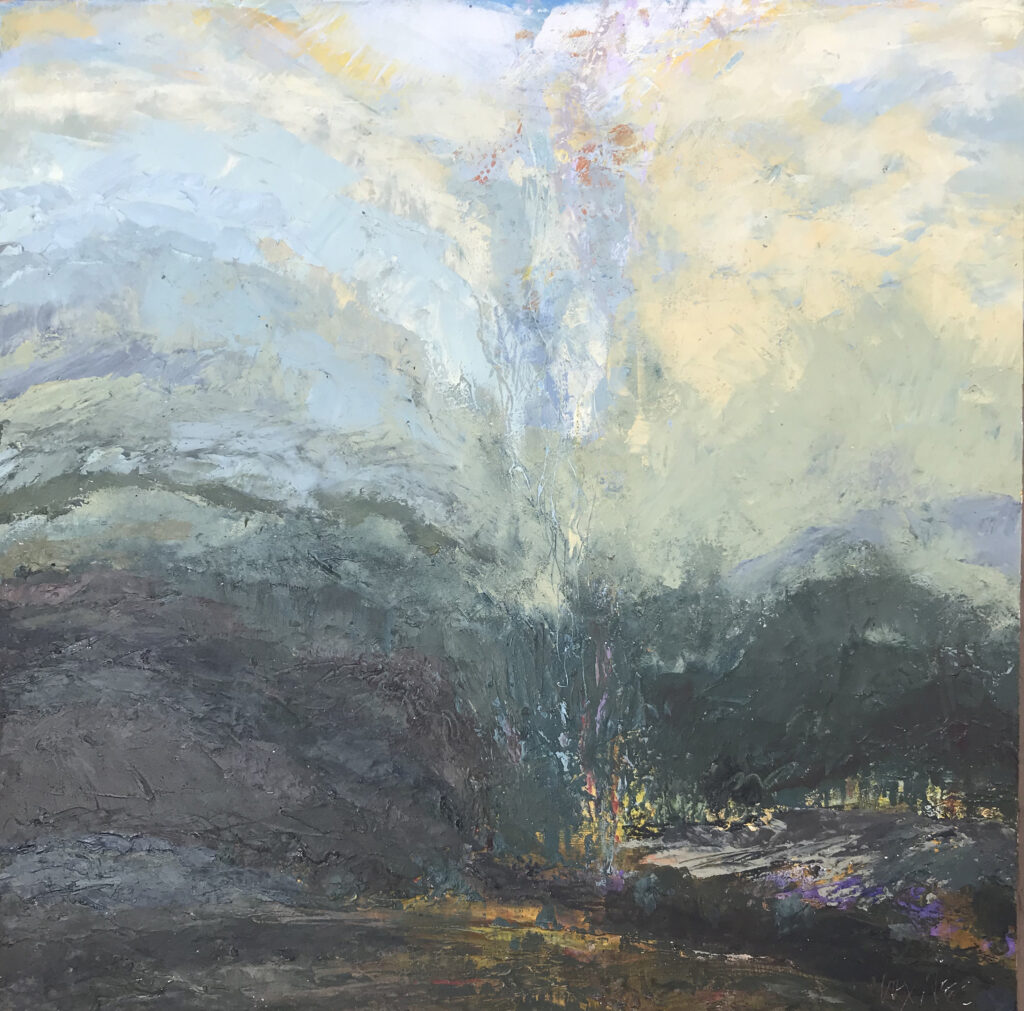
The painting I accomplished for Psalm 123, pictured here, is unlike the postcard suggestions in my first three landscapes of this series. This one pulls the viewer right in and on some darkening ground in real space. There’s a sense of activity behind the tree stands; but the thrust is upward, above the hills and further up into the atmosphere.
The walking rhythm we’ve already experienced in Psalms 120–122: 1. Distress, 2. Reliance, 3. Resolution, repeats now into a new measure of this whole song. And what is fascinating in this 2nd triplet, is that the Distress phase, the cry for help which begins each triplet is repeating some of the Reliance words we saw evidenced in the 1st triplet’s middle Psalm. In other words, what the traveler learned to do after his first woeful distress, he now is practicing at the very beginning of his second period of distress. He is further in. His base camp is higher than when he began.
Many quick readers or bystanders might dismiss at this point, saying “been there, done that”. However, don’t miss how Psalm 123 is preparing the treker. Compared to the resolution just viewed in 122, Psalm 123 has the traveler right back into some of the mundane difficulties of what a serious adventure really is. The journey has soundly begun; but here the pilgrim’s journey shows some attenuated concern, here he is tested. And it is right here where many bail, for the trek is more than they assumed. In John Bunyan’s classic allegory Pilgrim’s Progress, the character Pliable gets into first trouble at this point — and retreats in disgust.
But the God-ward traveler trains his eyes past the trouble, he has to if he wants to make it through: “I look up toward you…” he says. He then adds a couple illustrative examples as he muses in his steps “until He shows us favor”. He is in difficulty, he is awaiting answer, but he has to wade through it in faith. This is the test.
This Psalm exemplifies how a continuing walk will keep on: straight ahead, straight through. “Show us favor, O Lord, show us favor!…” The road is not easy, he describes what it feels like. Like Psalm 120, he names the scoffing and the contempt around him, but his focus is higher for his trust has been established. At this point the traveler has an informed connection with His Lord.
The commitment to make the full journey gets a real try-out here. The purpose of any test is to reveal what (if anything?) has been learned. In fact, it can be said that the fortitude to finish the rest of the journey gets outfitted through the test in the experience of this Psalm.
I look up toward you,
the one enthroned in heaven.
Look, as the eyes of servants look to the hand of their master,
as the eyes of a female servant look to the hand of her mistress,
so our eyes will look to the Lord, our God, until he shows us favor.
Show us favor, O Lord, show us favor!
For we have had our fill of humiliation, and then some.
We have had our fill
of the taunts of the self-assured,
of the contempt of the proud.
Psalm 123, New English Translation
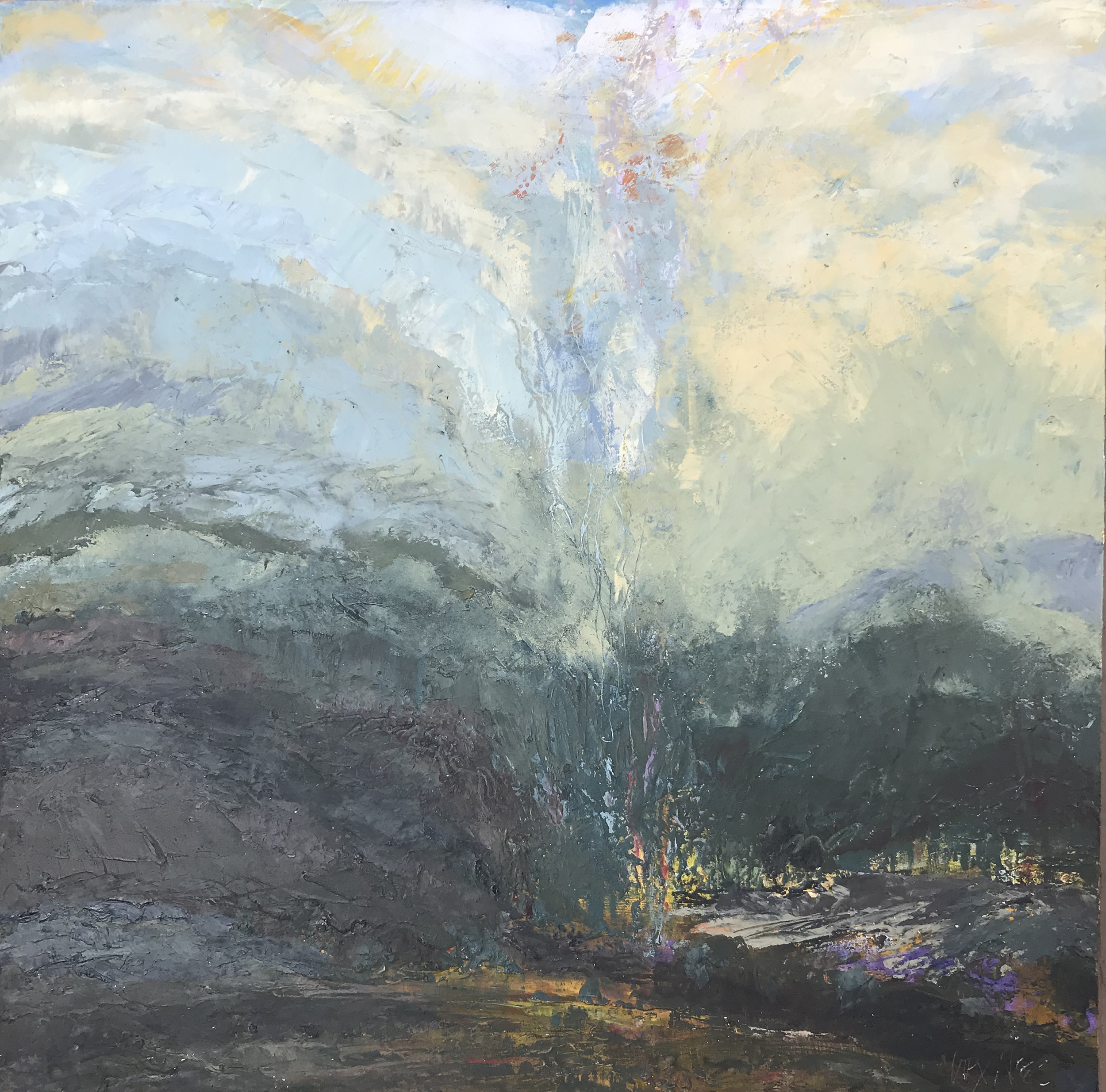
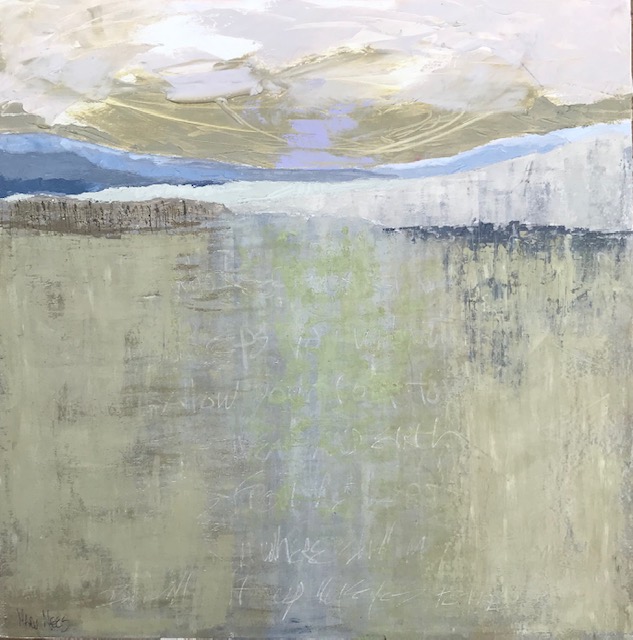
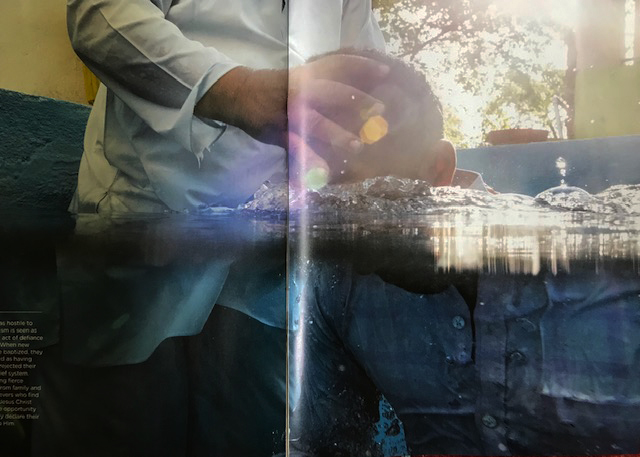
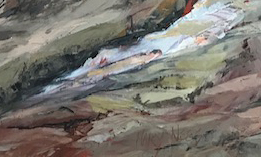
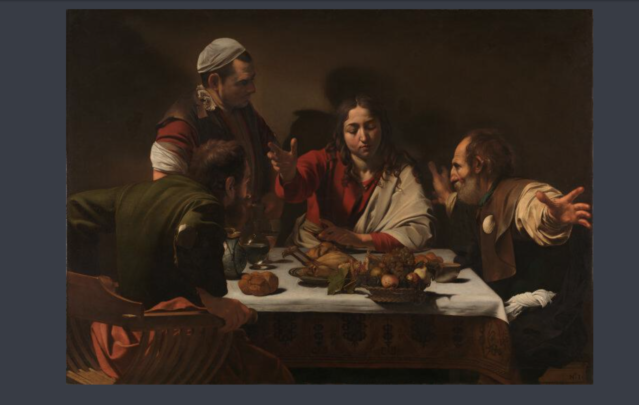


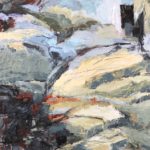
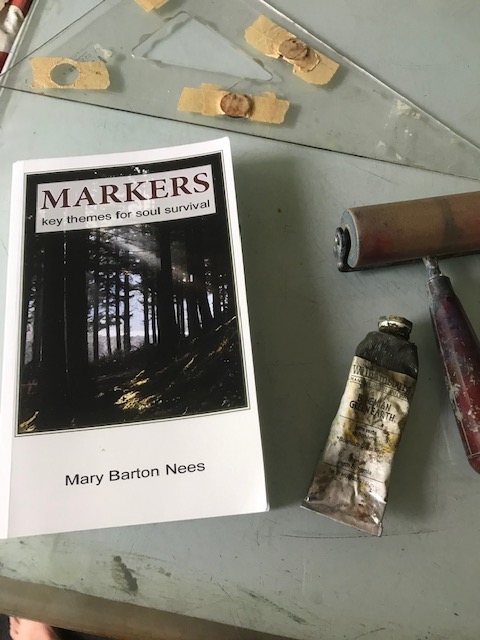
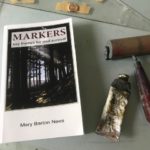
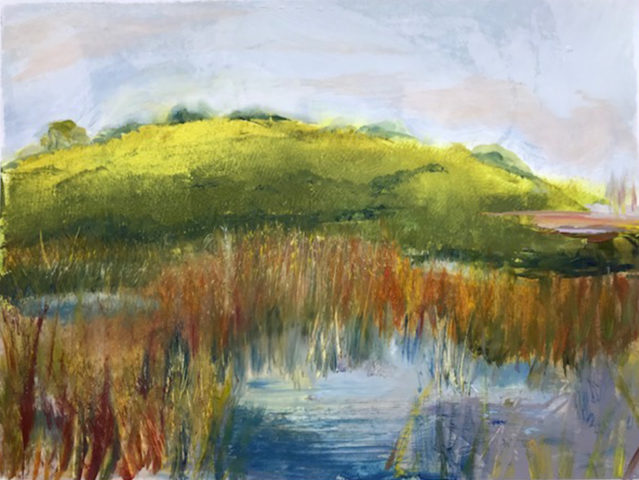
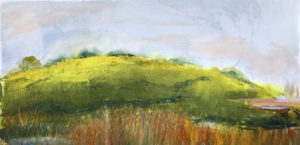

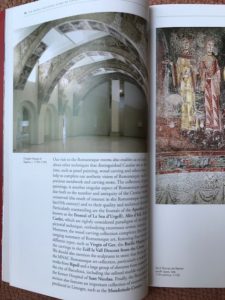 Barcelona’s National Museum of Catalonia has a collection of Romanesque murals that is unmatched by any museum in the world! Room after room gives one almost a time-machine opportunity to enter spaces that were situated in humble towns in the Pyrenees Mountains of Eastern Spain. These murals and sculptural pieces were then carefully removed to be preserved in the museum (imagine the public and private involvement to carry that feat out). Arranged in chronological (therefore stylistic) order, the spaces reveal the emerging imagery from small churches of the medieval period (11th-13thcenturies). What’s available then is a visualization of homegrown private conviction which was developed then displayed for public engagement. What was once internal became publically shared and what was then public becomes privately better understood. And this then down thru centuries for others to consider. Past into present. Imagine that ripple effect.
Barcelona’s National Museum of Catalonia has a collection of Romanesque murals that is unmatched by any museum in the world! Room after room gives one almost a time-machine opportunity to enter spaces that were situated in humble towns in the Pyrenees Mountains of Eastern Spain. These murals and sculptural pieces were then carefully removed to be preserved in the museum (imagine the public and private involvement to carry that feat out). Arranged in chronological (therefore stylistic) order, the spaces reveal the emerging imagery from small churches of the medieval period (11th-13thcenturies). What’s available then is a visualization of homegrown private conviction which was developed then displayed for public engagement. What was once internal became publically shared and what was then public becomes privately better understood. And this then down thru centuries for others to consider. Past into present. Imagine that ripple effect.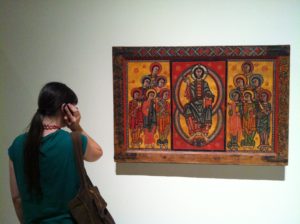 Here is a wooden altar panel I especially loved for its graphic punch, simplicity, and pattern. It’s a typical example of Byzantine flatness. Yet the abstraction of forms were rendered with human differentiation and quirkiness. The viewer of the time would have been able to relate. And the viewer now is carried into another world’s way of seeing, even if just catching a glimpse. What was private conviction of the artist became embedded in his public context, what simmered inwardly became visible for others to be able to look and see.
Here is a wooden altar panel I especially loved for its graphic punch, simplicity, and pattern. It’s a typical example of Byzantine flatness. Yet the abstraction of forms were rendered with human differentiation and quirkiness. The viewer of the time would have been able to relate. And the viewer now is carried into another world’s way of seeing, even if just catching a glimpse. What was private conviction of the artist became embedded in his public context, what simmered inwardly became visible for others to be able to look and see.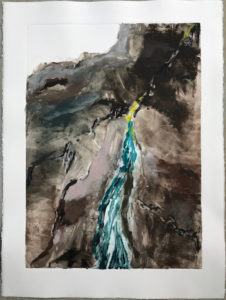
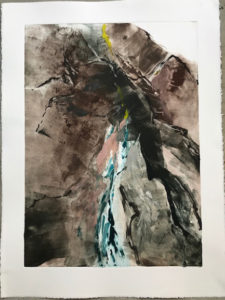 The journey of Moses leading the Hebrews out of slavery and into the land has informed some recent visual work. There’s a curious episode with water coming out of a rock that strangely happens twice:
The journey of Moses leading the Hebrews out of slavery and into the land has informed some recent visual work. There’s a curious episode with water coming out of a rock that strangely happens twice: 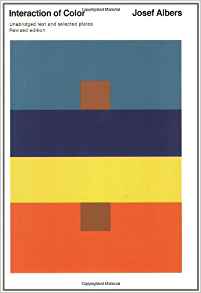 The mid 20th century Bauhaus instructor Joseph Albers was a master at helping his art students understand this. Using color chips and simple exercises, like “make five colors into six”, they learned the relativity of color. “In order to use color effectively, it is necessary to recognize that color deceives continually”, Albers said. Here is one exercise exampled. The brown squares are the same exact hue, but the reading of each is influenced by its surrounding colors. A dark context makes the center color lighter, a cool context makes the center color warmer and vice versa.
The mid 20th century Bauhaus instructor Joseph Albers was a master at helping his art students understand this. Using color chips and simple exercises, like “make five colors into six”, they learned the relativity of color. “In order to use color effectively, it is necessary to recognize that color deceives continually”, Albers said. Here is one exercise exampled. The brown squares are the same exact hue, but the reading of each is influenced by its surrounding colors. A dark context makes the center color lighter, a cool context makes the center color warmer and vice versa.